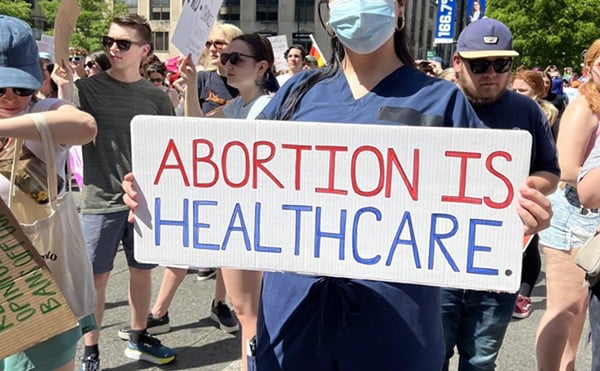Good morning y’all. I’m back from vacation and ready to give you all the news and stuff you can handle. In case you’re wondering, my time off involved a jaunt to Chicago for a concert where audience members were encouraged to divide into two huge groups and run at each other high-fiving, trips to five Pilsen Mexican restaurants and a long night/early morning in a private karaoke room where they keep up the bootleg music videos, Red Bull, beer and Drake tracks until you die (I abstained from the beer and the Drake, but did drink way too much Red Bull). Then I came back to Cincinnati and promptly got sicker than I’ve been in a long time. Fun stuff.
Anyway, let’s do this news thing. Home prices in Over-the-Rhine are getting higher and higher, but you probably already knew that. What you maybe didn’t know is how close the neighborhood is getting to million-dollar homes. Recently, a condo on Central Parkway sold for $850,000, the Cincinnati Enquirer reports. That’s roughly 4,250 nights in a private karaoke room in Chicago’s Chinatown, or, you know, 2,125 months (177 years) in an affordable apartment that costs $400 a month. While that huge figure is something of an outlier, the neighborhood is certainly heating up. The average sale price for single family homes in the neighborhood was hovering around $220,000 in 2010. These days, it’s nearly twice that at $427,000. Those developing high-selling properties in the neighborhood say that there’s more to the story than the big numbers and that they’ve put in tons of investment to bring the properties up to their current condition. Of course, the rise in values also raises questions about affordability in the historically low-income neighborhood. The amount of affordable housing in OTR has dwindled in recent years, though new additions could help that situation. Over the Rhine Community Housing, for example, just finished its Beasley Place building on Republic Street, which will provide 13 new units of subsidized housing in the neighborhood.
• Will a major federal lab end up in uptown Cincinnati? It’s a good possibility. The National Institute of Occupational Safety and Health is looking to consolidate two labs it currently runs in the city and is at least considering the possibility of building its new $110 million facility near the University of Cincinnati. NIOSH Director John Howard told the Cincinnati Business Courier recently that proximity to UC is a big consideration. Should NIOSH decide to build uptown, the development could play into a bigger push by area leaders to create an “innovation corridor” near the site of the new I-71 interchange along Reading Road and Martin Luther King, Jr. Blvd. in Avondale and Walnut Hills. Uptown or no, NIOSH would like to keep the proposed 350,000-square-foot building within the I-275 loop, it says, in part because of public transit considerations.
• Speaking of public transit, don’t look to Ohio to start spending more on it anytime soon. The state legislature has dismissed suggestions that the state spend more on public transportation as it crafts the next two-year budget. Legislators in the GOP-dominated state house have brushed aside a $1 million study by the Ohio Department of Transportation calling for more spending on buses, rail and other forms of public transit. That study highlighted the growing need for public transit among the state’s low income and elderly, as well as the increasing popularity of a less car-dependent lifestyle among young professionals Ohio would like to attract. Currently, Ohio ranks 37th in per-capita spending on transit, despite being the nation’s 7th most populous state. The study recommended a $2.5 million boost in transit spending in the next year alone, part of a much larger boost over time. Even Gov. John Kasich, a vocal opponent of most transit spending, put an extra $1 million in his suggested budget for transit next year. But no go, the legislature says.
• While we’re talking about Kasich, let’s touch on his recent move cutting collective bargaining rights for home health care workers and in-home childcare workers. These workers aren’t state employees but contract with the state for some work. In 2007, then-Gov. Ted Strickland handed down an executive order giving those workers collective bargaining rights, which allowed them to receive health insurance from state worker unions among other benefits. Kasich promised to rescind that executive order during his successful run for governor against Strickland, but has held off until now, he says, to preserve the workers’ access to insurance. Now, the governor says the Affordable Care Act means that the workers don’t need unions to get health care, and that as contractors they shouldn’t be given bargaining rights. Kasich has long been a foe of collective bargaining — after taking office in 2008, he worked to end collective bargaining rights for all state employees. Voters later struck down his efforts in a state-wide referendum. Democrats and union representatives have cried foul at Kasich’s latest move.
“It’s a sad day when those who care for our children, our seniors and Ohioans with disabilities — and who simply want to be able to make ends meet while providing that invaluable service — become the target of a cynical political attack," Ohio Democratic Chairman David Pepper said in a statement.
• Finally, the big story today is happening in Cleveland, where questions about police use of force are swirling. Just days after courts dismissed manslaughter charges against Cleveland Police Officer Michael Brelo, a settlement between the city and the federal government looks imminent. In 2010, Brelo, who is white, fired 15 rounds into the windshield of a car, killing unarmed Timothy Russell and Malissa Williams, both black, after a police chase that started when a backfire from the car was mistaken for a gunshot. That incident, as well as many others, were highlighted in a nearly two-year investigation by the DOJ into the department’s use of force. That investigation found what the DOJ calls systemic problems with the department’s use of force and the way it reports and disciplines officers who may have used force improperly.
U.S. attorneys are holding meetings with various stakeholders in the city today and are expected to soon announce a settlement between the city’s police department and the U.S. Department of Justice. The expected consent decree would put CPD under federal oversight and bring about big reforms for the department, which continues to draw controversy. Last year, an officer with the department shot and killed 12-year-old Tamir Rice while the child played with a toy pistol. Charges against that officer are pending.






